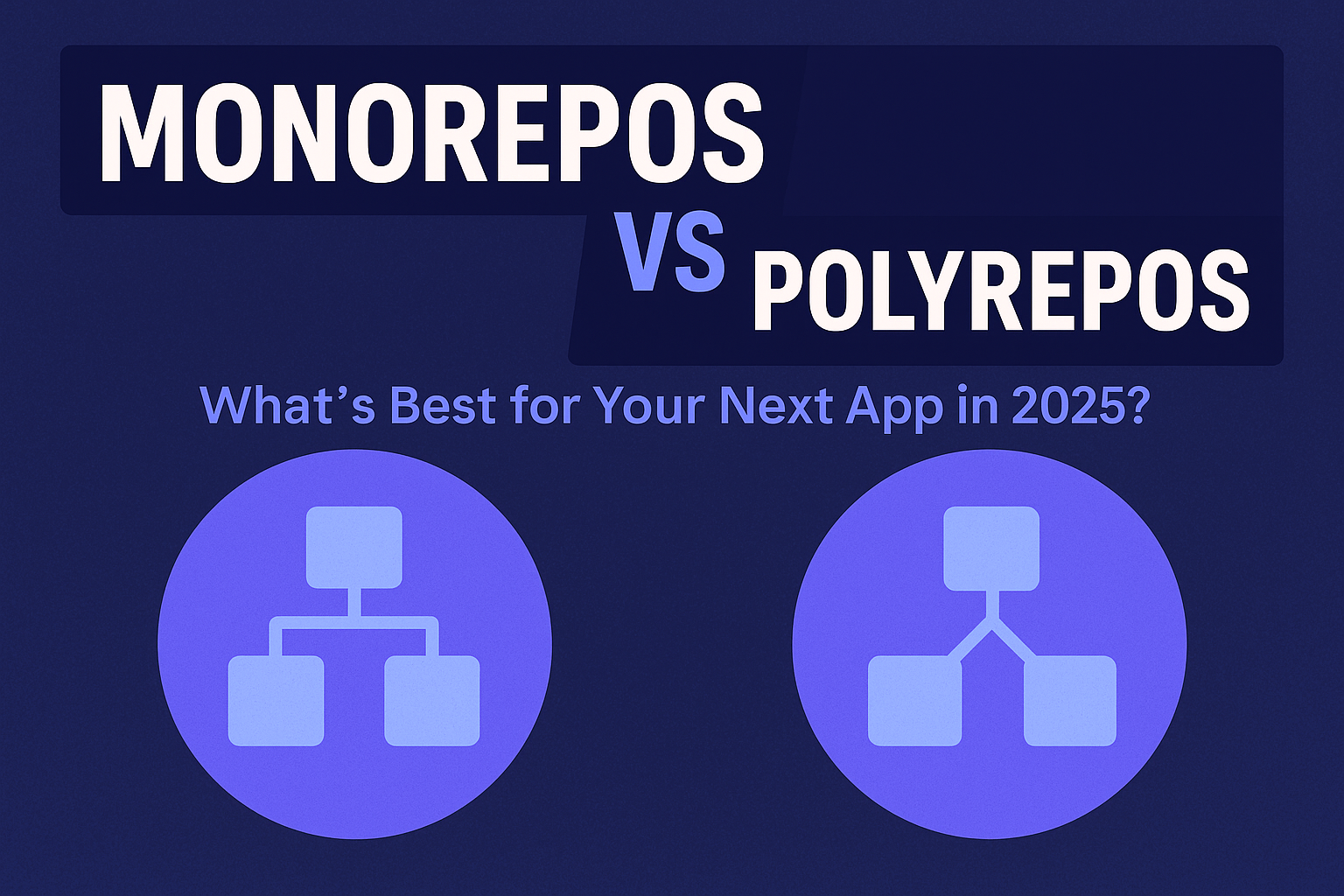- Our Work
-
-
PORTFOLIO
OTHERS
-
-
- Services
-
- How We Work
-
- Resources
-
- About Us
-
- Contact Us
- Let’s Talk
In the fast-paced world of app development, choosing the right codebase architecture is critical. Whether you’re building a robust enterprise application, launching a modular SaaS product, or delivering government-contracted solutions, the structure of your code repository can make or break your development workflow.
At Finally Free Productions (FFP), we work across industries—from digital products to federal platforms—and one question often arises in the engineering room:
Should we use a monorepo or a polyrepo?
This article breaks down the core differences, advantages, challenges, and decision-making criteria to help you determine the best fit for your next app.
🔍 What Are Monorepos and Polyrepos?
Monorepo (Monolithic Repository):
A monorepo is a single repository that contains the code for multiple projects, services, or modules. Teams using monorepos can manage and version all projects in one place, making dependency sharing and refactoring easier.
Polyrepo (Multiple Repositories):
A polyrepo structure separates each project, service, or module into its own repository. This model emphasizes project independence and isolates changes to specific components.
✅ Benefits of a Monorepo
Unified Development Environment:
Shared tooling and configuration make it easier to enforce standards across projects.Simplified Dependency Management:
Internal libraries are easier to share and version.Atomic Changes Across Projects:
Developers can make changes across multiple modules in one commit, avoiding versioning mismatches.Streamlined CI/CD Pipelines:
When optimized, a monorepo allows for consistent and centralized testing and deployment workflows.
⚠️ Challenges with Monorepos
Tooling Complexity at Scale:
Without robust tooling like Bazel or Nx, large monorepos can become slow and difficult to navigate.Increased Build Times:
Inefficient dependency graphing may lead to long build/test cycles unless optimized.Access Control Limitations:
Fine-grained access control is harder; all developers may see the entire codebase.
⚠️ Challenges with Polyrepos
Dependency Duplication:
Shared code may be copied across repos, leading to maintenance headaches.Cross-Team Coordination:
Changes across multiple repos require more communication and versioning discipline.Tooling Fragmentation:
Managing different pipelines, test frameworks, and configurations across repos can lead to inefficiencies.
🧠 When to Use a Monorepo
You’re working on a tightly integrated product suite.
Your team values unified tooling and testing environments.
You have a strong DevOps culture with robust CI/CD automation.
You’re working on internal tools or tightly coupled microservices.
🧠 When to Use a Polyrepo
You’re developing standalone services or APIs.
Teams are organized around distinct business domains or client contracts.
You need strong access control or plan to open-source certain parts.
You’re working with external collaborators or vendors.
🧩 FFP’s Engineering Recommendation
At FFP, we evaluate architecture decisions based on:
Project scope and lifetime
Team size and specialization
Security requirements (especially for government contracts)
Tooling maturity
Integration and release cycles
For long-lived internal products with shared tooling, monorepos often win. For contractor-led modules, regulated components, or externally maintained APIs, we favor polyrepos.
Ultimately, no structure is universally better. The best decision aligns with your engineering culture, operational scale, and compliance needs.
🔚 Conclusion
Choosing between monorepos and polyrepos isn’t just a technical decision—it’s a strategic one. As your product matures and your team grows, the flexibility to evolve your repo structure is essential.
If you’re planning your next app and need help architecting the development lifecycle, reach out to the FFP engineering team. We specialize in scalable, secure, and sustainable software ecosystems built to grow with your mission.
 All
All AI & ML
AI & ML Healthcare
Healthcare Education
Education Games
Games Fitness
Fitness Business
Business Webapps
Webapps Websites
Websites More
More Startup
Startup Web3 Development
Web3 Development Capabilities
Capabilities Game Development
Game Development Website Development
Website Development Prototyping Services
Prototyping Services Mobile App Development
Mobile App Development Client Dashboard
Client Dashboard Design Process
Design Process IP Protection
IP Protection Project Management
Project Management Working with Finally Free
Working with Finally Free FAQ
FAQ How to Videos
How to Videos About FFP
About FFP Meet The Team
Meet The Team Press
Press